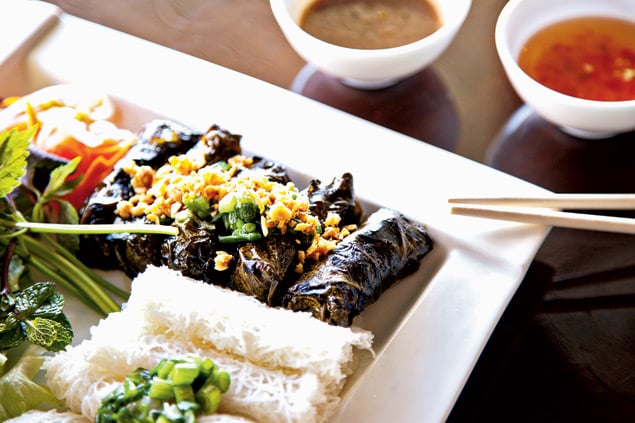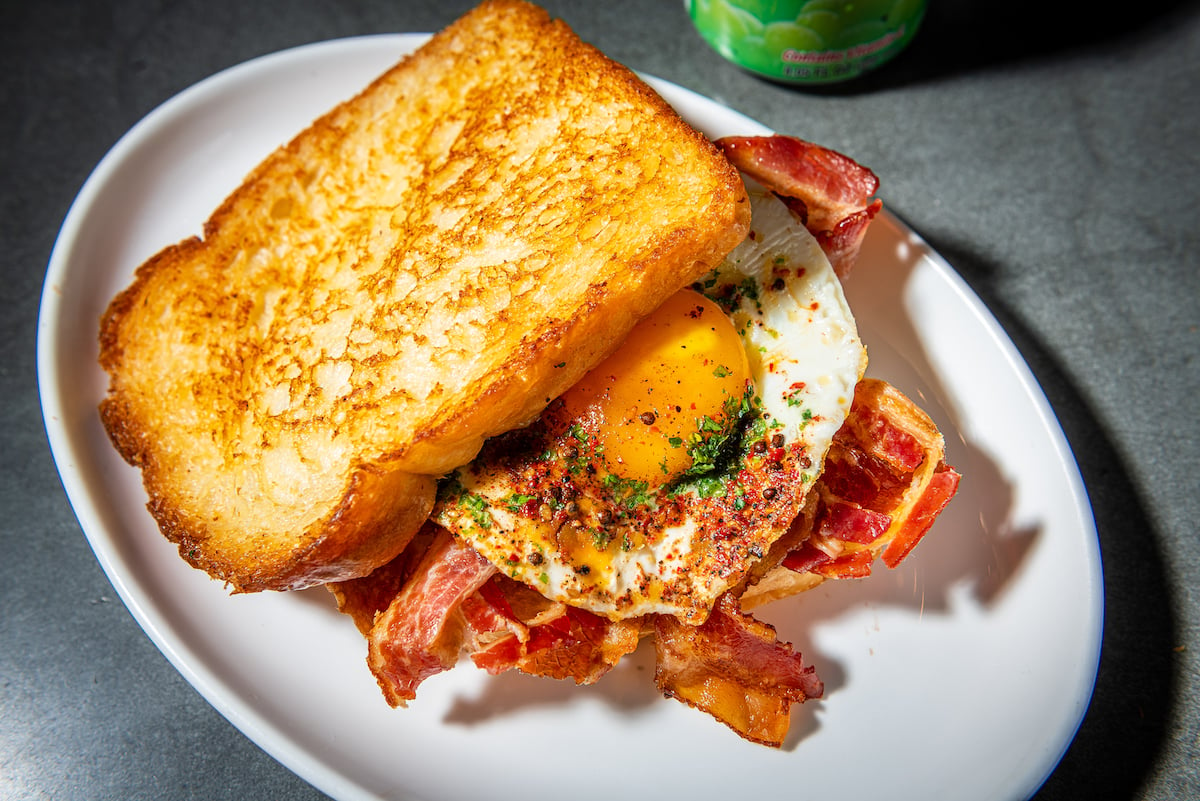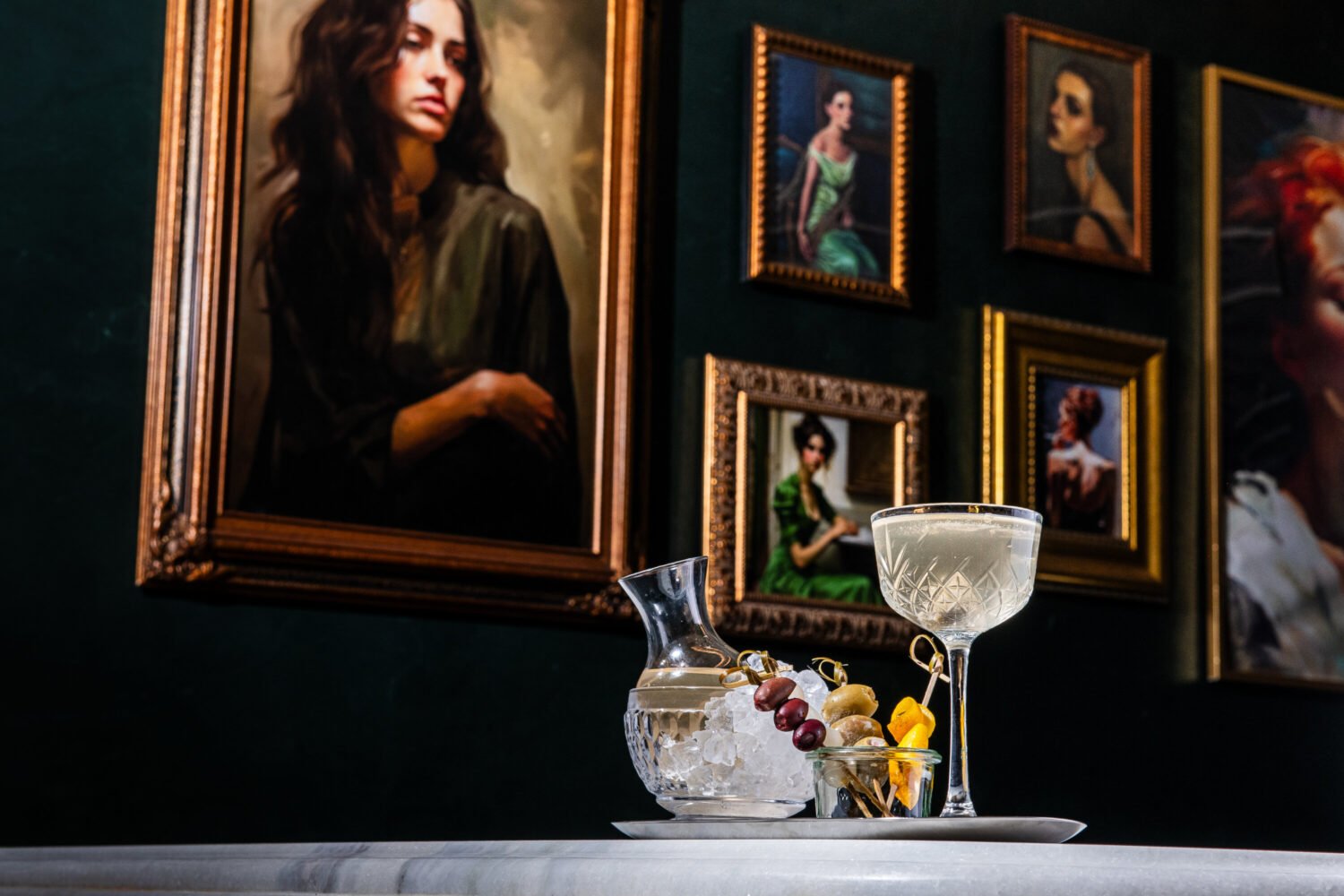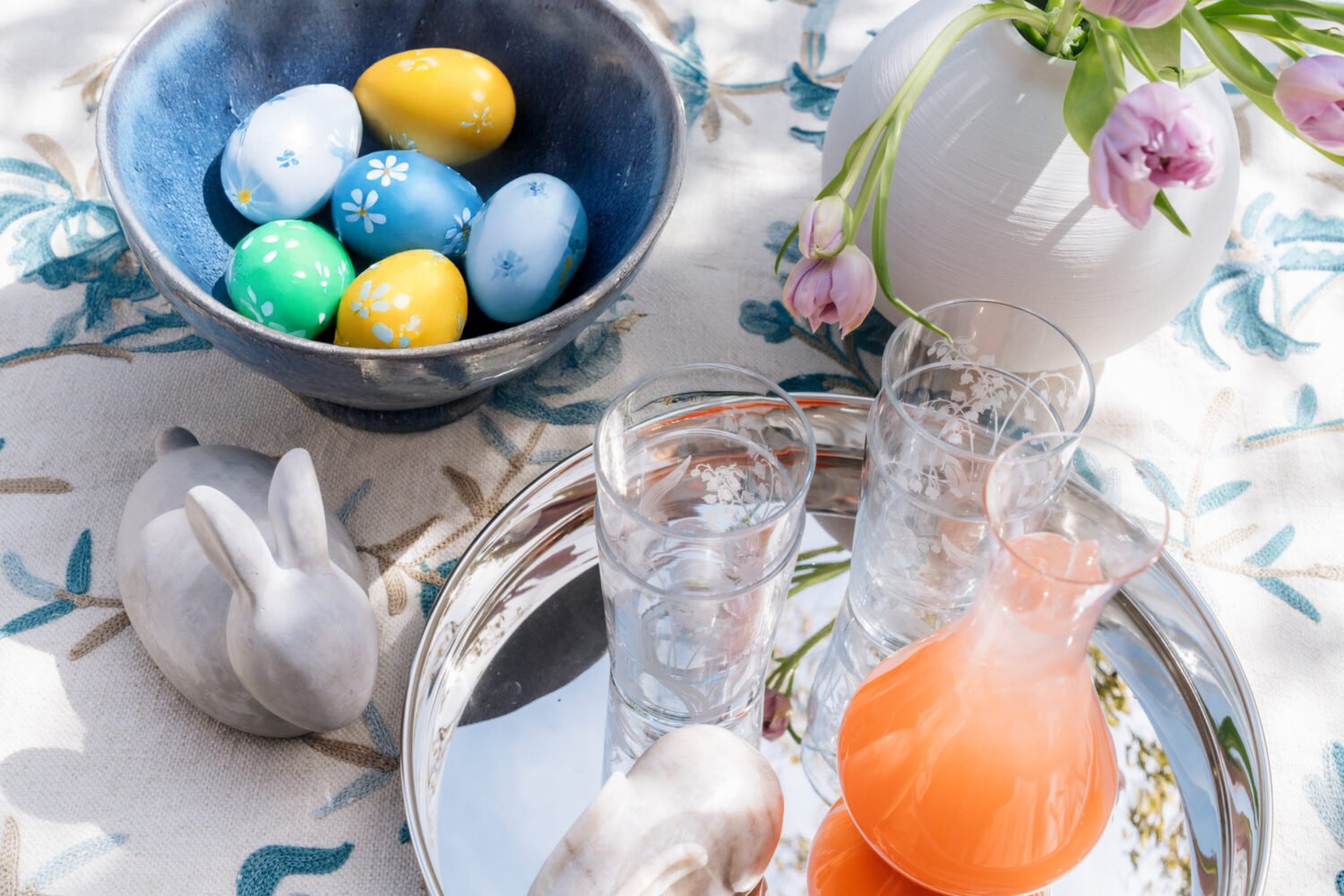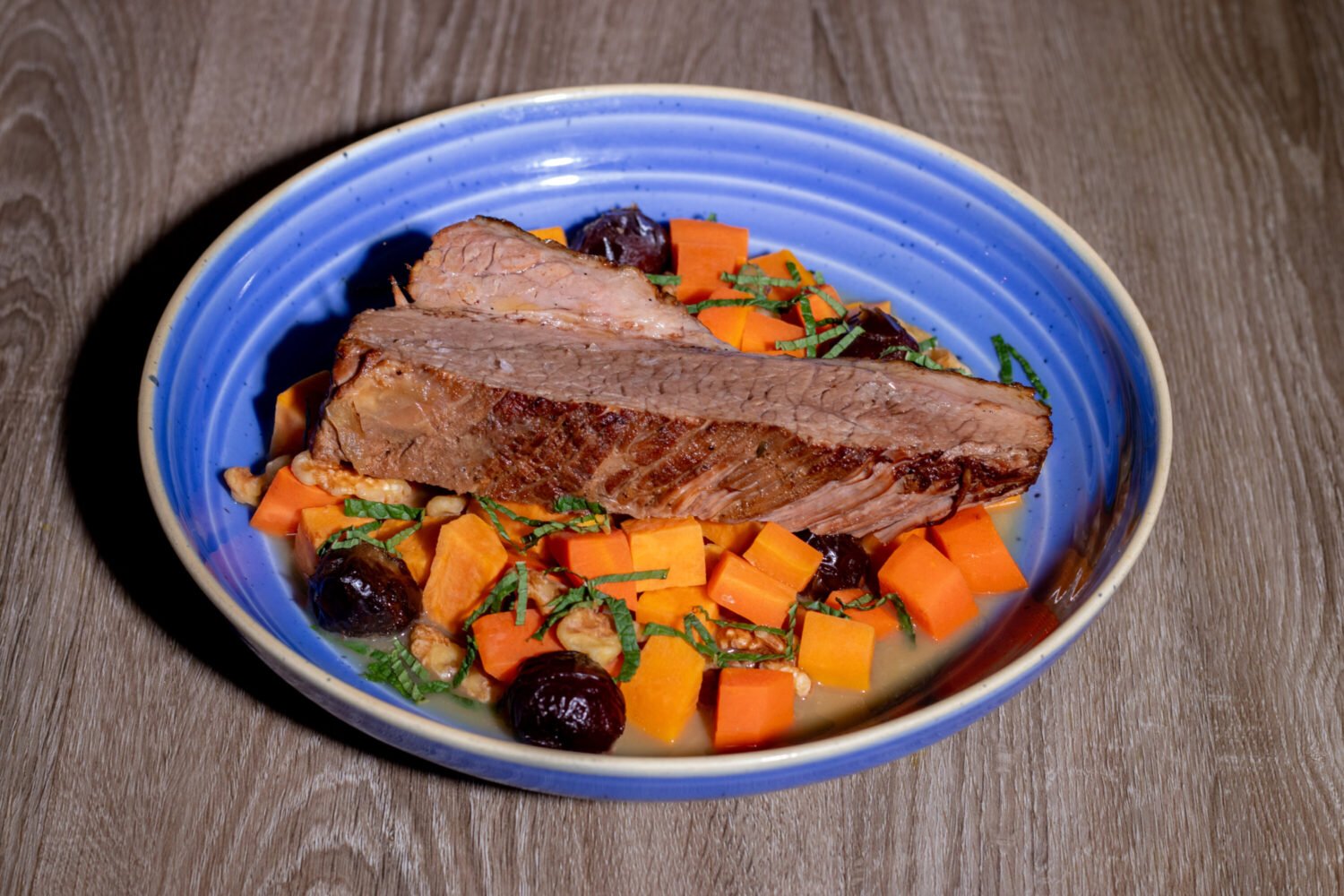Suppose you were to stumble upon a new restaurant on a weekend–a so-called ethnic restaurant, say, in a pocket of other so-called ethnic restaurants.
Through the window you see a slick-looking space with dangling lights, pressed-tin ceilings, and white leather chairs.
Your initial reaction might be to (a) feel reassured by such plush surroundings and inclined to give an unfamiliar cuisine or restaurant a try or (b) walk away, believing that the quality and authenticity of cooking are in direct proportion to the lack of presumption in the decor.
If, like me, you answered “b,” you probably regard yourself as a discriminating diner not easily seduced by surfaces. You’re also, as I can attest, a reverse food snob. Like many ingrained tendencies, reverse food snobbery is hard to rid oneself of. My knee-jerk response on peering into Rice Paper was to suspect that it had adopted the pose of the small-plates lounge to provide cool cover for dishes as colorless as the item from which it takes its name, the thin sheets used to bundle shrimp and pork into tiny rolls.
Then I dug into a dish whose name–chicken salad with cabbage–was as timid as the dish was bold. Tucked among the strips of cabbage and red onion were the expected slices of breast meat but also a medley of gizzards, heart, and liver, all vibrantly coated with fish sauce. The remarkable thing was how balanced the flavors were, and how vivid.
Next came a plate of duck, which had been shredded, drizzled with ginger sauce, and piled atop a banana leaf. Alongside the duck was a little item the menu neglected to mention: duck testicles.
These dishes were brilliant demonstrations of the Vietnamese gift for salads, the interplay of contrasting elements more akin to the antipasto of an Italian restaurant than to the slot-fillers we’re accustomed to in many American restaurants.
By the third course–a plate of snails in a delicate coconut cream sauce tinted yellow from curry, I had a sense that Rice Paper might be not merely legit but in fact a find. My friends and I picked up the shells and sucked out the innards. Licking my fingers, I caught the eye of the co-owner, Mai Lam, behind the bar. She beamed her approval.
Lam and her family–the principals at Rice Paper include her mother, Xuan Tran, and her cousin, Phuong Thanh Ho, who cooked previously at Hoang’s Grill & Sushi Bar and Hai Duong–are new to the restaurant business, but they’re not strangers to the Eden Center. For 22 years, the family operated a jewelry shop where the restaurant is now. When the economy bottomed out, Lam decided to indulge a dream she and her mother had long nursed. Last fall they gutted the space and launched a new life. Selling gold and silver might not have prepared them for the rigors of running a business that starts from scratch every day, Lam told me, but it did teach them about their customer base, which–with nearly 30 restaurants at the Eden Center to choose from–is insistent on “quality, freshness, value, and authenticity.”
Accordingly, the six dipping sauces–crucial to a cuisine in which many meals involve folding bites of food into lettuce or rice paper–are house-made, and produce comes from nearby markets. No one will tell you where the greens come from, how lovingly they were tended, or how they speak to the core values of the restaurant, but they’re excellent. Aside from a spectacular $35 hot pot that feeds four, no dish is more than $15.
The 120-item menu draws on the cuisines of northern, southern, and central Vietnam and amounts to one-stop shopping for Eden Center exiles longing for the tastes of home. For many Westerners, it provides an introductory course in one of the world’s richest culinary cultures. You’ll find it all here, or nearly all: pho, spring and summer rolls, stir-fries (including a standout “shaky” beef), rice-flour crepes (get the bánh xèo, a kind of flopping, folded sandwich with a wrapper made light from beer and sweet from coconut milk), rice plates, and the soothing porridge called congee.
There are both kinds of bun, the spicy northern Vietnamese soup (including bun rieu oc, which brings together stewed tomatoes, crab, cellophane noodles, and bean sprouts), and the noodle bowl that numbers among its many expressions thit nuong, a sort of deconstructed salad (in one version, vermicelli, grilled pork and shrimp, pulverized peanuts, carrot, radish, mint, and basil) that you dress with fish sauce and toss like a Caesar.
I tried only one vegetarian dish, fried tofu cut to resemble a child’s building blocks, but it was superlative. Imagine a nearly runny French cheese spilling from a shell as crusty and hot as a tater tot. Now douse that shell with crushed chilies, lemongrass, and salt.
I would have been surprised if there hadn’t been a handful of East/West mash-ups that leaned more west than east. The surprise is that Rice Paper emphasizes homey simplicity over artful plating. A terrific thrice-cooked chicken–roasted, fried, and slathered with a lemongrass-chili-garlic paste before being stir-fried–summons a Jamaican jerk, and a revisionist take on lemongrass short ribs sports a spicy, salty rub that calls to mind a Memphis barbecue joint. Both are garnished with pickled celery and collard greens.
The fanciest moment is when the beef-stuffed grape leaves arrive, alongside what looks to be a napkin holder designed by Michael Graves. One side contains rounds of rice paper, the other a pool of water. You soften the sheet in the water, then make your wrap, bundling the grilled, smoky grape leaves with vermicelli, crushed peanut, torn mint, and pickled carrot and daikon. Few bites are so marvelously alive.
No kitchen that covers so much ground can be expected to excel in every category. A generous pork platter turned up a dry, thin chop, and a soy-and-honey-glazed quail was juicy in some places and dry in others. Both were potholes on a long, smooth road. The weakness of the operation is a young staff that seems reluctant to engage with diners. Lam acknowledged as much over the phone, vowing to improve. The transition has been exhilarating but also exhausting. “The jewelry business isn’t what it used to be,” she said, “but people always have to eat.”
Still, the old lives on in the new. Having previously encouraged customers to splurge, Lam is now working a sly bait-and-switch–drawing them in with a coolly modern space that hints of pampering, then pleasing them with plates of simple sustenance. So far, so irresistible. I never should have doubted.
This article appears in the April 2012 issue of The Washingtonian.

